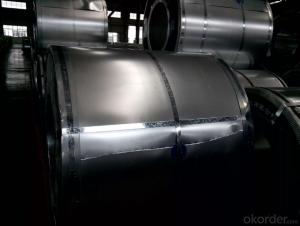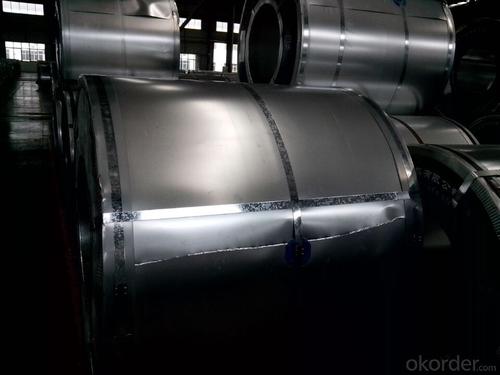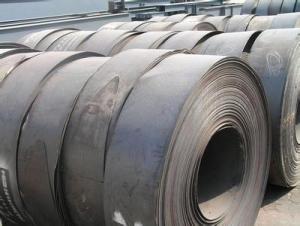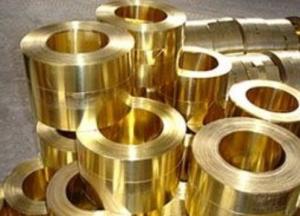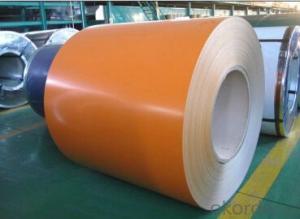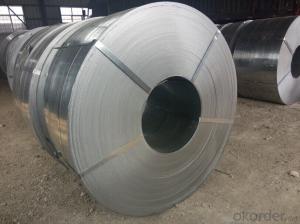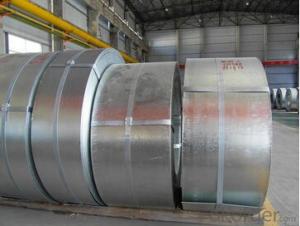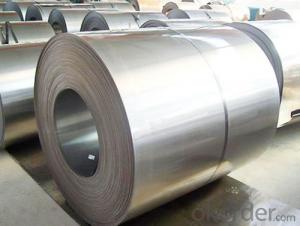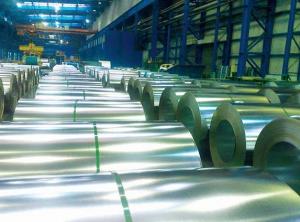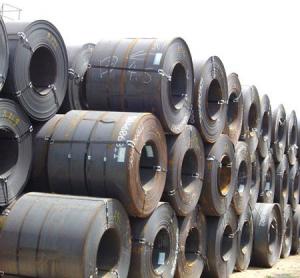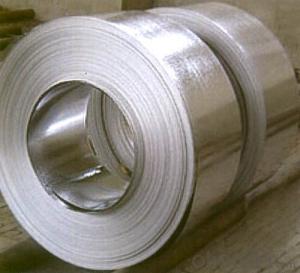Hot Dipped Galvanized Steel Strip Coil
- Loading Port:
- China Main Port
- Payment Terms:
- TT OR LC
- Min Order Qty:
- -
- Supply Capability:
- -
OKorder Service Pledge
Quality Product, Order Online Tracking, Timely Delivery
OKorder Financial Service
Credit Rating, Credit Services, Credit Purchasing
You Might Also Like
Hot Dip Galvanized Steel Strip Coil
Steel Grade & Standard:JIS G3302 SGHC
Zinc Coating Mass:Z14
Spangle:Regular Spangle
Surface Treatment:CHROMATED & UNOILED
Thickness:3.7mm
Width:620mm
Coil ID:610mm
Coil Weight:4MTS MIN
- Q: How are steel strips used in the manufacturing of bearings?
- Steel strips are used in the manufacturing of bearings as they act as the raw material for producing the inner and outer rings of the bearing. These strips are shaped, machined, and heat-treated to form the necessary ring components, which provide support, alignment, and enable the smooth rotation of the bearing.
- Q: What are the benefits of using pre-painted steel strips?
- The benefits of using pre-painted steel strips include enhanced durability and corrosion resistance, reduced maintenance and painting costs, improved aesthetics, and efficient installation due to the ready-to-use nature of the pre-painted strips.
- Q: How are steel strips used in the production of blades?
- Steel strips are used in the production of blades as they provide a strong and durable material that can be easily shaped and hardened. These strips are often cut, shaped, and then heat-treated to create the desired blade shape and hardness. The steel's strength and flexibility make it ideal for producing sharp and long-lasting blades, used in various applications such as knives, saws, or industrial cutting tools.
- Q: How are steel strips used in manufacturing?
- Steel strips are commonly used in manufacturing for a wide range of applications such as forming, stamping, and shaping various metal components. They are ideal for creating products like automotive parts, appliances, construction materials, and even electrical equipment. The versatility and strength of steel strips allow manufacturers to efficiently produce precise and durable items, making them an essential component in the manufacturing industry.
- Q: What are the safety precautions to consider when handling steel strips?
- When handling steel strips, there are several safety precautions to consider. First, it is important to wear appropriate personal protective equipment (PPE) such as gloves, safety glasses, and steel-toed boots to protect against cuts, abrasions, and potential falling objects. Additionally, it is crucial to ensure proper lifting techniques and use equipment like forklifts or cranes when moving heavy steel strips to avoid strains or back injuries. Maintaining a clean and organized work area can also minimize the risk of slips, trips, and falls. Finally, being aware of the sharp edges and potential hazards associated with steel strips, workers should exercise caution and follow established safety procedures to prevent accidents or injuries.
- Q: How are steel strips processed for edge conditioning?
- To ensure smooth, burr-free edges suitable for various applications, steel strips undergo a series of steps for edge conditioning. The typical process includes: 1. Slitting: Using a slitting machine, the steel coil is cut into narrower strips of the desired width. This step ensures the strips are the appropriate size for further processing. 2. Deburring: The edges of the steel strips may have burrs or sharp edges from the slitting process. To eliminate these imperfections, the strips are passed through a deburring machine. This machine uses abrasive belts or brushes to grind away the burrs, leaving a smooth, rounded edge. 3. Edge Rolling: After deburring, the steel strips may undergo edge rolling to refine the edge profile. This involves passing the strips through rollers that gradually shape and smooth the edges. It helps eliminate any remaining burrs, sharp corners, or irregularities, resulting in a more uniform edge. 4. Chamfering: Depending on the application, the edges of the steel strips may be chamfered to create a beveled or angled edge. Specialized chamfering machines or tools are used to cut or grind away a small portion of the edge, creating a sloping or angled surface. This chamfered edge improves handling, reduces the risk of damage, and facilitates easier insertion or joining in specific applications. 5. Final Inspection: Once the edge conditioning process is complete, the steel strips undergo a final inspection to ensure they meet the required specifications. This includes visual examination, dimensional checks, and testing for any remaining burrs or sharp edges. If any issues are found, the strips may be reworked or rejected to maintain desired quality standards. Overall, edge conditioning for steel strips involves steps such as slitting, deburring, edge rolling, chamfering, and final inspection. The aim is to produce strips with smooth, burr-free, and well-defined edges that meet the specific requirements of different industries and applications.
- Q: How are steel strips processed for engraving?
- To prepare steel strips for engraving, a series of steps must be followed. These steps include cleaning and degreasing the strips to eliminate any dirt or oil, guaranteeing a smooth surface for the engraving process. Solvents or chemical cleaners are commonly used for this purpose. Once the strips are clean, a layer of photoresist material is typically applied to provide protection during engraving. This photoresist acts as a barrier against the engraving process. The strips are then exposed to UV light through a pattern or template, causing the photoresist to harden in specific areas. Subsequently, the strips undergo the actual engraving process, which can be carried out using different techniques such as chemical etching or laser engraving. In chemical etching, the strips are submerged in an etching solution that selectively removes the unprotected areas of the photoresist, exposing the steel underneath. On the other hand, laser engraving employs a focused laser beam to directly eliminate the photoresist and etch the steel. Once the engraving is completed, the remaining photoresist is typically removed using a chemical solution or mechanical methods. This reveals the engraved design on the steel strips. Depending on the desired finish, additional treatments like polishing or coating may be applied to enhance the appearance and durability of the engraving. In summary, the process of engraving steel strips involves cleaning, applying a photoresist layer, exposing to UV light, engraving, removing the photoresist, and applying finishing touches. This ensures precise and detailed engravings on the steel strips, making them suitable for various applications such as decorative items, industrial marking, or identification tags.
- Q: How are steel strips used in the production of aerospace components?
- Steel strips are used in the production of aerospace components for various purposes such as structural reinforcement, forming complex shapes, and providing strength and durability to the final product. These strips are often used to create brackets, fasteners, and other critical parts that require high strength-to-weight ratio and resistance to extreme conditions, ensuring the reliability and safety of aerospace components.
- Q: How are steel strips processed for brazing?
- To achieve a robust and long-lasting bond, steel strips undergo a series of steps during the brazing process. Firstly, thorough cleaning is carried out to eliminate any dirt, oil, or oxidation. Chemical cleaners or abrasive blasting are commonly employed for this purpose. Following the cleaning stage, a flux, a chemical compound that prevents oxidation during brazing, is applied to the steel strips. This can be achieved by immersing the strips into a flux bath or by spraying it onto the surfaces. Once the flux is applied, the steel strips are assembled into the desired configuration, with filler material or components added as necessary. To ensure proper alignment during brazing, the assembly is tightly clamped or fixtured. The actual brazing process involves heating the steel strips and filler material to a specific temperature until the filler metal melts and flows into the joint. Depending on the size and complexity of the assembly, this heating can be performed using a furnace or torch. Once the desired brazing temperature is reached, the steel strips are maintained at that temperature for a specific duration to allow for proper bonding. The length of time required may vary depending on the thickness and composition of the steel strips. Upon completion of the brazing process, the steel strips are gradually cooled to prevent thermal stresses or distortion. After cooling, the assembly is thoroughly inspected for defects or imperfections, and any necessary post-braze operations, like cleaning or machining, are carried out. In summary, the brazing of steel strips necessitates meticulous cleaning, application of flux, precise assembly, controlled heating, and thorough inspection to ensure a bond of exceptional quality.
- Q: What are the alternatives to steel strips in specific applications?
- Depending on the requirements and constraints, there are several options available as alternatives to steel strips: 1. Aluminum strips provide a lightweight and corrosion-resistant option. They are commonly used in industries like aerospace, automotive, and construction, where reducing weight and ensuring durability are crucial. 2. Copper strips are widely known for their excellent electrical conductivity and thermal properties. They find extensive use in electrical and electronic applications, such as transformers, motors, and electrical wiring. 3. Composite strips, such as carbon fiber reinforced polymers (CFRP) or fiberglass, offer high strength, stiffness, and corrosion resistance. These materials are commonly utilized in the aerospace and marine industries due to their favorable weight-to-strength ratio. 4. Plastic or polymer strips, like polyethylene or polypropylene, are suitable alternatives when chemical resistance, flexibility, or low friction properties are important. Industries like packaging, automotive, and healthcare frequently employ these materials. 5. Wood strips have long been utilized as a traditional alternative to steel, particularly in construction and furniture industries. Wood offers natural beauty, ease of working, and sustainability compared to steel. Before selecting an alternative to steel strips, it is essential to consider the specific requirements of the application, such as mechanical properties, weight, corrosion resistance, and cost. Each alternative material has its own advantages and limitations, and the choice will depend on the specific needs of the application.
Send your message to us
Hot Dipped Galvanized Steel Strip Coil
- Loading Port:
- China Main Port
- Payment Terms:
- TT OR LC
- Min Order Qty:
- -
- Supply Capability:
- -
OKorder Service Pledge
Quality Product, Order Online Tracking, Timely Delivery
OKorder Financial Service
Credit Rating, Credit Services, Credit Purchasing
Similar products
Hot products
Hot Searches
Related keywords
